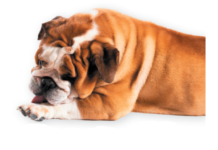Q My 11-year-old retriever-Bernese mix, Charlie, always used to walk forward in a normal fashion. But lately, I’ve been noticing that he waddles from side to side as he moves forward, kind of swinging his back in the process. It looks cute, to tell you the truth, and he doesn’t seem distressed in any way. Is this a normal part of aging? I’ve seen other dogs waddle, too.
Patricia Derns
Canton, Ohio
Dear Ms. Derns,
AIt is not normal for a dog to waddle. He should be able to keep his back straight as he goes. Most often, when an older dog goes from a normal gait to a waddle, it means he has arthritis. People tend to think arthritis pain will manifest itself as a limp — that is, an uneven gait — or perhaps difficulty rising from a sitting or lying position. But if both back legs have arthritis, a dog might waddle to spare compromised joints that would cause pain if he walked straighter. A dog can actually go for years waddling before the pain reaches the point that his owner will notice his discomfort.
We should note that if it’s both front legs that are affected with arthritis, a dog might shuffle in order to cut down on the time spent on each limb. Holding up a front paw could be a sign of arthritis, too. People often think the paw is hurting when it could be the elbow or the shoulder. The dog is simply holding his limb in an unusual position to take pressure off an afflicted joint.
A dog who is waddling, shuffling, or holding up a paw should be seen by a veterinarian to determine the cause. If arthritis is indeed discovered to be the culprit, there’s much that can be done. It starts with weight control and exercise modification — lifestyle measures that orthopedists consider the cornerstone of arthritis management, ahead of drugs or surgery. Sometimes weight loss and the right physical activity are enough to reverse symptoms, not just keep the disease from getting worse.
Charlie should be kept thin — even a little thinner than average. The less weight, the less joint pressure — and the less pain.
As for exercise, the aim is to continue it, but not with high-impact play that includes running and jumping, which jar the joints. Leash walks and swimming are two excellent possibilities. They will strengthen Charlie’s muscles, which act as shock absorbers to protect his vulnerable joints.




